Protecting natural resources, including air, land and water. Also of interest are threatened and endangered species as well as endangered species. Conservation (wildlife, soil, water, etc.) issues also discussed. Topics include: RCRA, CERCLA, Clean Water Act (CWA), NEPA, 404 Permits, EPCRA, FIFRA, and others.
Search This Blog
Wednesday, August 31, 2016
Drought in the Northern Forests?
From the USDA:
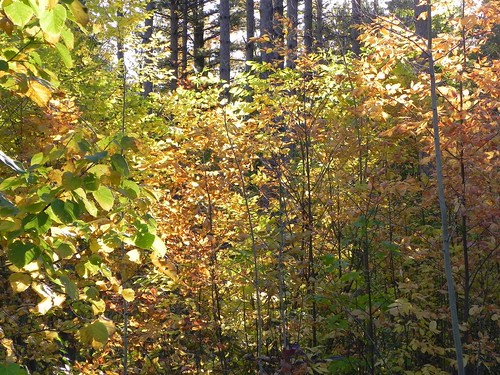
Posted by Chris Swanston, USDA Northern Forests Climate Hub Director, U.S. Forest Service, on August 31, 2016 at 11:00 AM

Drought-stressed saplings begin to shed their leaves early in a Michigan forest. Photo credit: US Forest Service
When I hear the word drought I imagine dusty rangelands and drying lakes. But it’s hard to imagine tumbleweeds blowing through the Northern Forests of the Midwest and Northeast regions. In fact, these forests have seen overall wetter conditions in recent decades and their annual precipitation is expected to continue increasing with the changing climate.
So why worry about droughts in these northern forests?
Well, it’s not just about how much precipitation arrives in a year, but when the precipitation arrives and in what form. We certainly don’t need to worry about a dust bowl blowing across New England, but there is genuine concern about late-growing season moisture stress increasingly occurring in many species in our northern forests.
There doesn’t have to be an outright drought for moisture-loving trees to feel the pinch if they’re getting less water than they need.
A recent Comprehensive Science Synthesis of Drought Impacts on U.S. Forests details long-term observations of warmer temperatures and changing rainfall patterns, and projects how these climate conditions are anticipated to continue changing throughout the country. An important point in the Northeast and Midwest is that we are getting more rainfall, but more of our precipitation is coming in torrential rain events that don’t necessarily provide moisture at the right time for plants.
It turns out that warmer temps and changing rainfall, not necessarily less rainfall annually, are two key ingredients for drought and moisture stress. More extreme precipitation events, longer duration between events, and shifting seasonality of precipitation will likely increase the frequency of drought occurrences and moisture stress over the next century.
Drought can come in many forms and is projected to occur more frequently as short duration hot droughts. Short duration hot droughts can be forest altering, inducing stress on trees which reduce growth and decrease forest health. Northern forest moisture limitations may favor drought tolerant species such as pines and oaks as time passes; over the next century climate projections describe a shift in tree habitats for many species, which may move northward or to higher elevations.
Although management options for the regions’ forests will vary based on the vulnerability of a particular ecosystem to moisture stress, drought-adaptive strategies can include reducing competition for limited soil moisture, increasing forest species diversity, altering stand density, leaving harvest residues, and favoring species that enjoy dry spells. Climate change may bring new opportunities, but also new risks – these may not alter our decisions, but it never hurts to beinformed.
Related Posts
The UPS Foundation Advances Global Forestry Initiative
The UPS Foundation, which leads the global citizenship programs for UPS (NYSE: UPS), announced it will award more than $2.6 million in grants to nonprofit organizations focused on environmental sustainability initiatives. This includes a significant grant to twenty-five year partner, The Nature Conservancy, a global organization that works to preserve ecologically important land and water resources through conservation. Other grants will support programs that advance environmental research and education, carbon reduction and energy conservation – all vital to economic growth and community stability.
The UPS Foundation Advances Global Forestry Initiative
The UPS Foundation Advances Global Forestry Initiative
Duckling
From U.S. Fish and Wildlife Service Midwest Region:
Summer is a great time to visit lakes and rivers. This duckling was spotted taking a nap in the sun. Where is your favorite place to spend summer days?
Photo: Duckling courtesy of Jen Goellnitz/Creative Commons. https://flic.kr/p/HJUN6Y
Photo: Duckling courtesy of Jen Goellnitz/Creative Commons. https://flic.kr/p/HJUN6Y
Summer Tanagers
From U.S. Fish and Wildlife Service Midwest Region:
Summer tanagers are bee and wasp specialists! They catch them in mid-air, rub them on a branch to remove stingers and chow down.
Photo: Summer tanager courtesy of John Flannery/Creative Commons. https://flic.kr/p/npihv3
Summer tanagers are bee and wasp specialists! They catch them in mid-air, rub them on a branch to remove stingers and chow down.
Photo: Summer tanager courtesy of John Flannery/Creative Commons. https://flic.kr/p/npihv3
Tuesday, August 30, 2016
Honeywell Receives Awards For Pioneering Environmentally Preferable Technologies
MORRIS PLAINS, N.J., Aug. 22, 2016 /PRNewswire/ -- Honeywell (NYSE: HON)announced today that two of its research teams were recognized with Heroes of Chemistry Awards for the development of environmentally preferable technologies.
The awards from the American Chemical Society, the largest scientific society in the world, were for development of a new low-global-warming-potential refrigerant for mobile air conditioning, as well as a novel process to produce jet fuel from renewable sources.
http://www.honeywell.com/newsroom/pressreleases/2016/08/honeywell-receives-awards-for-pioneering-environmentally-preferable-technologies
Halloween in August?
From the U.S. Fish and Wildlife Service:
Halloween in August? The Halloween pennant is a dragonfly named for its orange and black wings. It feeds on mosquitoes and other flying insects -- a good species to keep around!
Vicki DeLoach / Creative Commons
Halloween in August? The Halloween pennant is a dragonfly named for its orange and black wings. It feeds on mosquitoes and other flying insects -- a good species to keep around!
Vicki DeLoach / Creative Commons
Now is a Good Time to Look for and Report Signs of Asian Longhorned Beetle Damage on Trees
From the USDA:

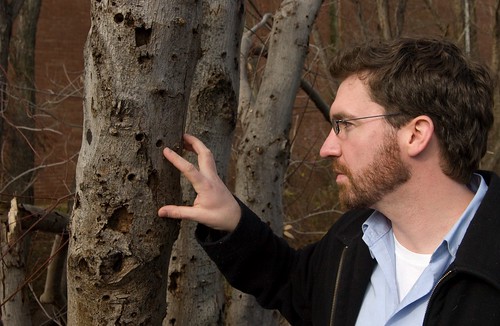
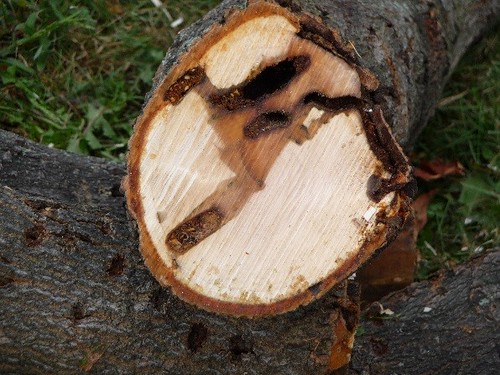
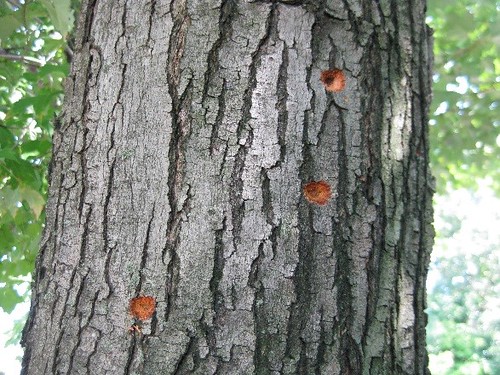
Posted by Rhonda Santos, APHIS Public Information Officer, on August 29, 2016 at 1:00 PM

Two adult Asian longhorned beetles on a maple tree.
To some people the smell of summer is a fresh cut grass or morning dew, but to me summer is the scent of healthy trees in full bloom. It reminds me that summer isn’t over yet and there is still time to be outdoors. And with August as Tree Check Month for the invasive Asian longhorned beetle (ALB), it’s a good time to take a look at your trees to make sure they are beetle free.
Last month, a homeowner on Long Island, N.Y., outside in her own yard, captured an adult beetle. She visited the website then called the ALB hotline telephone number 1-866-702-9938 to report the beetle. New York State’s Department of Agriculture and Marketing together with USDA’s Animal and Plant Health Inspection Service responded and collected the beetle, which was ALB. Six infested trees were found on the property.
In 2008 a Worcester, Mass. resident noticed beetles she had never seen before on her backyard trees. Curious, she typed out the the insect’s description on an internet search engine. Somewhat disbelieving when an alert popped up telling her to call federal authorities at her entered description, which she did. It turned out she had discovered and reported a previously unknown infestation of ALB in Massachusetts. The beetle was first discovered in 1996 when a Brooklyn, N.Y. resident mistook holes left by ALB chewing their way out of a tree for bullet holes from vandals using his tree for target practice. He reported the odd occurrence to officials who ultimately realized it was beetles not bullets that caused the damage.

Exit holes on a tree trunk.
Concerned community residents, noticing something amiss or unusual, have helped efforts to find and get rid of this dangerous pest. ALB is not native to the United States, and we don’t want it here. Aside from the potential impacts to industries that rely on the trees that the beetle attacks, there is a danger to residents that weakened, infested trees could drop limbs or cause other problems in the community. The beetle essentially starves the tree by creating tunneling inside that disrupts the flow of nutrients and from which the tree simply cannot recover. It is a sad tale for the infested tree but also for any community affected by an ALB infestation. Finding and stopping beetles before they can impact communities is key.

Tunneling shown on a cut branch.
Please get outside and look for and report any beetles or signs of ALB damage on trees. You can look for adult beetles, larva in cut or damaged wood, exit holes (a little smaller than a dime), egg sites(smaller than a quarter and look like chew marks), and of course oddly dead or fallen branches. The sooner beetles and infested trees are found, the sooner we can save other trees from being attacked, and ultimately eliminate the beetle. Plus, you’ll be outside smelling all the scents of summer while you still can and checking your trees at the same time.
After the first frost the adult ALB die and won’t be seen again until next summer. But beetles could be developing, and growing, and tunneling inside your trees. Check now to ensure you won’t see any adult beetles next summer. For more information on ALB, visit our ALB website.

Fresh egg sites on a tree trunk.
Related Posts
Monday, August 29, 2016
Tri-colored Bat
From U.S. Fish and Wildlife Service Midwest Region:
Tri-colored bats, sometimes called eastern pipistrelles, may not look multi-colored, but each hair is black, yellow and brown. They're among the smallest bats in the eastern U.S.!
Photo: Tri-colored bat by Pete Pattavina/USFWS.
Tri-colored bats, sometimes called eastern pipistrelles, may not look multi-colored, but each hair is black, yellow and brown. They're among the smallest bats in the eastern U.S.!
Photo: Tri-colored bat by Pete Pattavina/USFWS.
Gray Treefrog
From Port Louisa National Wildlife Refuge:
Gray treefrog sitting on a smartweed leaf.
Jessica Bolser/USFWS
Gray treefrog sitting on a smartweed leaf.
Jessica Bolser/USFWS
Snapping turtles are starting to hatch!
From U.S. Fish and Wildlife Service Midwest Region:
Snapping turtles are starting to hatch! We found this little one stuck on a path trying to reach the pond. We helped it reach its destination safely.
Photo: Common snapping turtle by Courtney Celley/USFWS.
Snapping turtles are starting to hatch! We found this little one stuck on a path trying to reach the pond. We helped it reach its destination safely.
Photo: Common snapping turtle by Courtney Celley/USFWS.
The elk mating season starts in September at the National Bison Range in Montana
From USFWS National Wildlife Refuge System:
The elk mating season starts in September at the National Bison Range in Montana, with much bugling by males as they try to attract females. You can get great views of wildlife along Mission Creek, especially in the morning or evening. Red Sleep Mountain Drive is usually open until October. Your car is a terrific observation and photography blind. The wildlife at the National Bison Range are quite acclimated to vehicles but skittish around people. The refuge closes at dark.
About the National Bison Range:http://bit.ly/2buRk1D
The elk mating season starts in September at the National Bison Range in Montana, with much bugling by males as they try to attract females. You can get great views of wildlife along Mission Creek, especially in the morning or evening. Red Sleep Mountain Drive is usually open until October. Your car is a terrific observation and photography blind. The wildlife at the National Bison Range are quite acclimated to vehicles but skittish around people. The refuge closes at dark.
About the National Bison Range:http://bit.ly/2buRk1D
Sunday, August 28, 2016
A monarch butterfly resting on a common milkweed
From U.S. Fish and Wildlife Service, Mountain-Prairie Region:
A monarch butterfly resting on a common milkweed on the White WPA in ND. Credit: Krista Lundgren/USFWS
A monarch butterfly resting on a common milkweed on the White WPA in ND. Credit: Krista Lundgren/USFWS
Northern Cardinal
From U.S. Fish and Wildlife Service Midwest Region:
Northern cardinals mostly eat seeds and fruits mixed with occasional insects. Watch for them along forest edges, fields and backyards.
Photo: Northern cardinal courtesy of Mark Moschell/Creative Commons.https://flic.kr/p/BuZ7iL
Northern cardinals mostly eat seeds and fruits mixed with occasional insects. Watch for them along forest edges, fields and backyards.
Photo: Northern cardinal courtesy of Mark Moschell/Creative Commons.https://flic.kr/p/BuZ7iL
Fawns and Their Spots
From U.S. Fish and Wildlife Service Midwest Region:
Fawns have their spots for about 3 or 4 months, providing essential camouflage. If you find one, remember to leave it be.
Photo: Fawn courtesy of Jen Goellnitz/Creative Commons. https://flic.kr/p/GmzbHQ
Fawns have their spots for about 3 or 4 months, providing essential camouflage. If you find one, remember to leave it be.
Photo: Fawn courtesy of Jen Goellnitz/Creative Commons. https://flic.kr/p/GmzbHQ
Eastern Pondhawks
From U.S. Fish and Wildlife Service Midwest Region:
Check out this stunning dragonfly! Eastern pondhawks are some of the earliest and latest dragonflies you’ll see flying each year. Have you spotted one?
Photo: Eastern pondhawk courtesy of Joel Tonyan/Creative Commons. https://flic.kr/p/fwRqq4
Check out this stunning dragonfly! Eastern pondhawks are some of the earliest and latest dragonflies you’ll see flying each year. Have you spotted one?
Photo: Eastern pondhawk courtesy of Joel Tonyan/Creative Commons. https://flic.kr/p/fwRqq4
Mule deer at sunset!
From U.S. Fish and Wildlife Service:
Mule deer at sunset! Mule deer bucks have antlers that fork, and then fork again. Whitetail deer have one main beam from which all other tines emerge.
Shelley C. Koerner / USFWS
Mule deer at sunset! Mule deer bucks have antlers that fork, and then fork again. Whitetail deer have one main beam from which all other tines emerge.
Shelley C. Koerner / USFWS
Saturday, August 27, 2016
Green Heron Making Its Own Shade
From U.S. Fish and Wildlife Service Midwest Region:
How do birds stay cool in the summer? It looks like this green heron is providing it’s own shade!
Photo: Green heron courtesy of Jen Goellnitz/Creative Commons. https://flic.kr/p/K7T6tX
How do birds stay cool in the summer? It looks like this green heron is providing it’s own shade!
Photo: Green heron courtesy of Jen Goellnitz/Creative Commons. https://flic.kr/p/K7T6tX
American Kestrel
From U.S. Fish and Wildlife Service Midwest Region:
American kestrels mostly eat insects but will sometimes catch small snakes or even squirrels! Watch for them in open areas, especially grasslands and fields.
Photo: American kestrel by Tom Koerner/USFWS.
American kestrels mostly eat insects but will sometimes catch small snakes or even squirrels! Watch for them in open areas, especially grasslands and fields.
Photo: American kestrel by Tom Koerner/USFWS.
Beautiful Butterflies
From U.S. Fish and Wildlife Service Midwest Region:
These beautiful butterflies can be found across much of North America. They prefer open areas with low vegetation and rely on nectar for a food source.
Photo: Common buckeye courtesy of John Flannery/Creative Commons. https://flic.kr/p/8KzYi1
These beautiful butterflies can be found across much of North America. They prefer open areas with low vegetation and rely on nectar for a food source.
Photo: Common buckeye courtesy of John Flannery/Creative Commons. https://flic.kr/p/8KzYi1
Friday, August 26, 2016
Stunning Damselflies
From U.S. Fish and Wildlife Service Midwest Region:
These stunning damselflies can be found near rivers and streams in wooded areas. They feed on mosquitoes, aphids, gnats and more!
Photo: Ebony jeweling courtesy of Joel Tonyan/Creative Commons. https://flic.kr/p/fBjEKy
These stunning damselflies can be found near rivers and streams in wooded areas. They feed on mosquitoes, aphids, gnats and more!
Photo: Ebony jeweling courtesy of Joel Tonyan/Creative Commons. https://flic.kr/p/fBjEKy
Muskrat
From USFWS National Wildlife Refuge System:
A muskrat grooms himself at Cokeville Meadows National Wildlife Refuge in Wyoming. Video:http://bit.ly/2bEm6qS While marsh wrens squabble in the background, a plump fellow preens by the water’s edge. Muskrats’ underwater trails maintain open areas in marshes, providing habitat for aquatic birds. (Video: Katie Theule/USFWS)
A muskrat grooms himself at Cokeville Meadows National Wildlife Refuge in Wyoming. Video:http://bit.ly/2bEm6qS While marsh wrens squabble in the background, a plump fellow preens by the water’s edge. Muskrats’ underwater trails maintain open areas in marshes, providing habitat for aquatic birds. (Video: Katie Theule/USFWS)
Houston Toad
From U.S. Fish & Wildlife Service Southwest Region:
Endemic to Texas, the elusive and endangered Houston toad is known for its high-pitched, trill-sounding calls in the spring. The USFWS and Texas Parks and Wildlife are working closely together to recover the Houston toad. As part of this effort, TPWD submitted to the USFWS a draft Safe Harbor Agreement for the Houston toad that is designed to encourage interested landowner to undertake conservation actions that could assist in the species recovery. The public now has the opportunity to review and comment on TPWD’s draft Safe Harbor Agreement. Additional information on the draft Safe Harbor Agreement and the Houston toad is available at https://www.fws.gov/
Photo Credit, Paige Najvar, USFWS
Endemic to Texas, the elusive and endangered Houston toad is known for its high-pitched, trill-sounding calls in the spring. The USFWS and Texas Parks and Wildlife are working closely together to recover the Houston toad. As part of this effort, TPWD submitted to the USFWS a draft Safe Harbor Agreement for the Houston toad that is designed to encourage interested landowner to undertake conservation actions that could assist in the species recovery. The public now has the opportunity to review and comment on TPWD’s draft Safe Harbor Agreement. Additional information on the draft Safe Harbor Agreement and the Houston toad is available at https://www.fws.gov/
Photo Credit, Paige Najvar, USFWS
Papahānaumokuākea
From U.S. Fish and Wildlife Service:
Great Friday news! Papahānaumokuākea just became the largest marine protected area on Earth:http://on.doi.gov/2bUyAIm
Lindsey Kramer / USFWS
Great Friday news! Papahānaumokuākea just became the largest marine protected area on Earth:http://on.doi.gov/2bUyAIm
Lindsey Kramer / USFWS
American White Pelicans gather at the base of Pyramid Lake’s Marble Bluff Dam
From Bureau of Reclamation:
American White Pelicans gather at the base of Pyramid Lake’s Marble Bluff Dam located near Nixon, NV, for a feast of spawning cui-ui. Cui-ui, a large sucker fish endemic to Pyramid Lake, were declared endangered in 1967, after agricultural diversions dried up much of the fish's habitat.
Cui-ui have a special cultural significance to the Pyramid Lake Piute Tribe. #DidYouKnow #Pelican#wildlife Photo by Reclamation GIS Specialist Jo Moore.
American White Pelicans gather at the base of Pyramid Lake’s Marble Bluff Dam located near Nixon, NV, for a feast of spawning cui-ui. Cui-ui, a large sucker fish endemic to Pyramid Lake, were declared endangered in 1967, after agricultural diversions dried up much of the fish's habitat.
Cui-ui have a special cultural significance to the Pyramid Lake Piute Tribe. #DidYouKnow #Pelican#wildlife Photo by Reclamation GIS Specialist Jo Moore.
Jumping Spider
From U.S. Fish and Wildlife Service Midwest Region:
Jumping spiders have great vision and are quite curious. If you approach one, you can easily encourage it to explore your hand. Sometimes it will jump from finger to finger!
Photo: Jumping spider courtesy of Thomas Shahan/Creative Commons. https://flic.kr/p/56BX2g
Jumping spiders have great vision and are quite curious. If you approach one, you can easily encourage it to explore your hand. Sometimes it will jump from finger to finger!
Photo: Jumping spider courtesy of Thomas Shahan/Creative Commons. https://flic.kr/p/56BX2g
Green Heron
From U.S. Fish and Wildlife Service Midwest Region:
Check out this striking green heron. When you see one, watch closely and you may see it use a twig or other tool as a lure to catch fish!
Photo: Green heron courtesy of Joel Tonyan/Creative Commons. https://flic.kr/p/fi8S3H
Check out this striking green heron. When you see one, watch closely and you may see it use a twig or other tool as a lure to catch fish!
Photo: Green heron courtesy of Joel Tonyan/Creative Commons. https://flic.kr/p/fi8S3H
With the Right Management, Pennsylvania Landowners Bringing Birds to Forest
From the USDA:
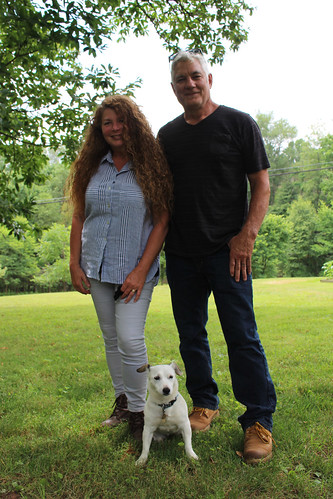
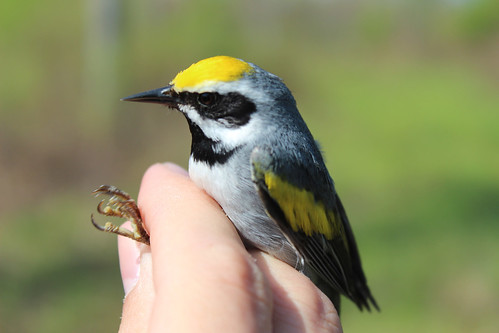
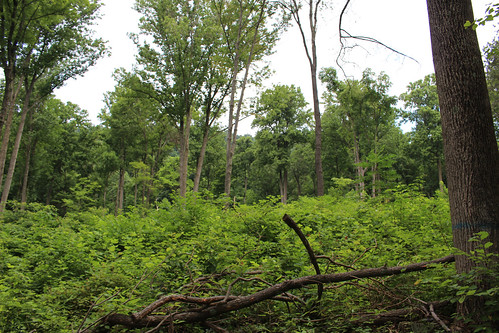
Posted by Justin Fritscher, Natural Resources Conservation Service, on August 25, 2016 at 1:00 PM

Natalie and Donald Love use sustainable forestry practices to improve early successional habitat on their land in central Pennsylvania.
Natalie Love wakes up each morning to the sounds of songbirds. “What a good way to start your day,” said Love, who lives in the Appalachian Mountains in central Pennsylvania.
Natalie and her husband Donald are working to improve the healthy, structurally diverse forests that provide many benefits for wildlife. By doing so, they’ve also improved their access to their forests, fought off undesired invasive plants and improved the aesthetics of their forest land.
“Sustainable forestry is benefitting our personal lives as well as wildlife,” she said. “We want to build an inviting place for the golden-winged warbler.”
The golden-winged warbler is a vibrantly-colored migratory songbird that breeds and nests in the United States and spends its winters in Central and South America. On its breeding grounds, the warbler requires expansive forested landscapes comprised of young forests, and patches of shrub land interspersed among forests of various ages that the warbler needs for nesting.

The golden-winged warbler is a vibrant, neotropical songbird that breeds in Appalachia and Midwest.
Early successional habitat on the bird’s breeding range, the Upper Midwest and Appalachian Mountains, has declined over the past 50 years as aging forests have come to dominate huge expanses.
Both game and non-game species that rely on younger forests are in decline, including the golden-winged warbler, which has suffered a 66 percent population decline since the 1960s. This major shift in the age classes of forests is the result of a lack of fires in recent years and unsustainable forestry practices that do not result in healthy, structurally diverse forests.
The Loves and other private landowners are voluntarily stepping up to manage for diverse forests on their land. With the help of USDA’s Natural Resources Conservation Service (NRCS) and other conservation partners, they are implementing a forest management plan to establish and improve young forests, or early successional habitat, on 70 acres.
By controlling invasive weeds and selectively removing trees, the Loves have attracted a variety of songbirds and wildlife. They have also created an aesthetically appealing wooded setting that has enhanced their property for family and visitors to the Airbnb cottage on their land. Through this management, they’ve been able to create walking trails on the land and enhance wildlife viewing opportunities.
“We found that people like the woods,” Love said. “They like to walk the trails and experience nature up close. We have been able to provide a place for people to explore nature and leave the woods better than what we moved into.”
In addition to NRCS, other partners included Indiana University of Pennsylvania, Pennsylvania Game Commission, American Bird Conservancy and Pennsylvania Department of Conservation and Natural Resources, who helped the Loves through the planning and implementation processes.
“We liked the idea of bringing birds in and having specialists help us be good stewards of the land,” said Donald Love.
Scientists for Indiana University of Pennsylvania and Cornell University are monitoring the response of wildlife to the forestry work, and have surveyed songbird response on the Love’s forests that were enrolled in Working Lands for Wildlife (WLFW).
“In only a couple of years since they have stepped up management, the diversity of songbirds is already impressive in the Love’s WLFW forest,” said Jeff Larkin, golden-winged warbler breeding habitat coordinator for the Indiana University of Pennsylvania and American Bird Conservancy. “We have recorded 29 species of songbirds including several at migratory species such as wood thrush, Louisiana waterthrush, scarlet tanager, indigo bunting, prairie warbler, ovenbird and hooded warbler. We have also detected the nocturnal songster, the eastern whip-poor-will.”
Habitat restored for the golden-winged warbler also benefits many other species, including songbirds like indigo bunting and prairie warbler, as well as game species like American woodcock, wild turkey, deer and grouse.
NRCS provides technical and financial assistance to the Loves through WLFW, an NRCS-led partnership that restores key working landscapes using target species, such as the golden-winged warbler, as barometers for success. Since 2012, the agency has helped landowners restore more than 13,000 acres of early successional habitat in the Appalachian region, including 8,000 acres in Pennsylvania alone.
“Most forest land in Appalachia is privately owned, making landowners pivotal to the bird’s success,” NRCS Chief Jason Weller said. “Stewardship-minded landowners, like the Loves, are stepping up to help the golden-winged warbler and other wildlife while also managing healthy, more productive forests.”

By controlling invasive weeds and selectively removing trees, the Loves have attracted a variety of songbirds and wildlife.
Related Posts
Thursday, August 25, 2016
Minneapolis Students Gear up for a School Year Full of Fresh, Locally Grown Foods
From the #USDA:
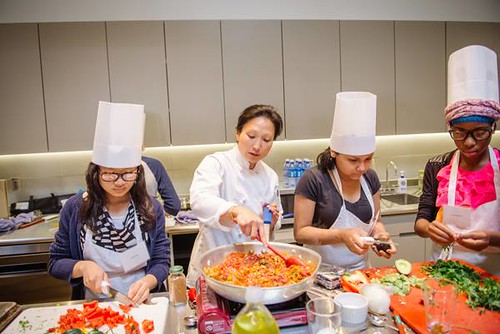
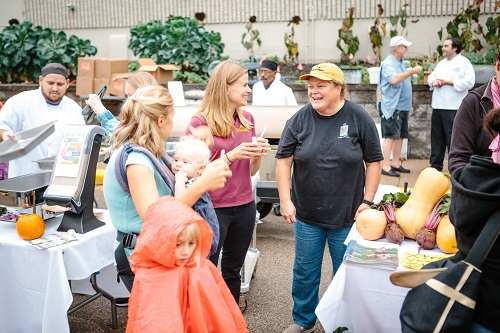
Posted by Christina Conell and Tecla Coleman-Sloan, Child Nutrition Programs, Food and Nutrition Service, on August 25, 2016 at 10:00 AM

MPS Jr. Iron Chef Competition with Chef Ann Kim and a True Food Chef Council member
It’s that time of year – books, backpacks and a BBQ! That’s right – Minneapolis Public Schools (MPS) is preparing for its annual Farm to School Community BBQ, a much anticipated back-to-school event that kicks off the school year. The following guest blog features inspiring initiatives MPS has implemented to serve local foods to its 35,000 students in the district.
Since 2011, MPS has sourced fresh produce, meats, baked goods and other products from local farmers and manufacturers. Purchasing local foods supports Minnesota farms and small businesses and provides opportunities for students to learn how their food is grown by extending farm to school efforts beyond the cafeteria and into the classroom with visits from farmers and taste-tests.
Farm to school also helps to support another USDA initiative designed to enhance school meals – theWhat’s Shaking? Creative Ways to Boost Flavor with Less Sodium initiative. Using local foods means that school nutrition programs are preparing more meals from scratch, allowing them to control the amount of sodium. Farm to school gets students engaged and excited about school meals – and with the community BBQ, both kids and their families get a sneak peek at what’s going to be on the lunch menu for the new school year.
By Kate Seybold, Farm to School Coordinator, Minneapolis Public Schools
What better way to ring in the new school year than by celebrating the bounties of local produce that farmers harvest during the back-to-school season? Minneapolis Public Schools (MPS) is hosting itsFifth Annual Farm to School Community BBQ – a community event built around fresh food, families and fun! The event brings together MPS students and their families, school staff, local farmers and vendors, True Food Chef Council members and other community partners in celebration of Minnesota Farm to School Month and our farm to school program.
It’s also a great opportunity to give the community a taste of our school food! This year, we expect around 1,000 attendees to join our local food celebration, which generates student excitement and family awareness about the abundance of local fresh fruits and vegetables that farmers grow in our area and that we serve on school salad bars and in delicious, made-from-scratch recipes featured on our school lunch menu! The evening will be filled with tons of roasted corn and other farm to school foods – along with dozens of fun activities and live music. The highlight of the night is the corn-shucking contest to see who can shuck the most ears of corn in only a few minutes.
The 2016-2017 school year marks the fifth year of MPS’ Farm to School Program. Since 2012, MPS has worked with small to mid-size, sustainable growers in our area to incorporate a variety of vegetables and fruit into our school meals. New farm to school foods are often introduced as a trial-run on the menu to allow us to gauge students’ responses and make decisions about moving forward with items. Last year, students went crazy over the roasted cauliflower and the fresh honeydew melon – they loved them! This year, we’ll buy everything from Brussels sprouts to kohlrabi to sweet potatoes, from more than 15 local farms. The sweet potatoes are featured as sweet potato jo-jo’s and in our “Beets and Sweets” menu item – which are roasted sweet potatoes and beets. The kohlrabi is made into a fresh slaw with carrots, apples and ginger.
Along with buying local, our farm to school program works closely with our community partners to provide food education and to interact with the broader community through our Minnesota Thursdaysmeals, True Food Taste Tests, Jr Iron Chef Competition, farmer classroom visits, and much more. These activities encourage students to be more adventurous eaters and educate them about where their food comes from.
Our farm to school initiative has also helped us meet and exceed the guidelines to keep sodium minimal in school meals. Also, less food seems to go to waste with fresh, flavorful scratch-cooking. At the end of each school year, we ask our school nutrition staff to complete surveys about popular farm to school menu items among their students. This information helps us to decide which items we would like to procure the following year through our farm to school program.
Building our farm to school program has been a learning process. We decided the best way to help other districts join this local food movement would be to share all the lessons we learned along the way! Our recently published Farm to School Toolkit has tools and resources that have been developed since the program’s inception in Minneapolis.
To learn more about farm to school programs, check out the Community Food System’s Webpage and to explore local and regional food systems in your community, visit the Know Your Farmer, Know Your Food Compass and the USDA Farm to School Census. Also, USDA’s What’s Shaking? Creative Ways to Boost Flavor With Less Sodium, a national sodium-reduction initiative, fosters creative ways to boost flavor and maximize taste to support efforts to lower the sodium content of school meals.

Rae Rusnak (L & R Poultry and Produce) next to her squash and beets, chats with MPS families at the Farm to School Community BBQ
Related Posts
Ovenbird
From U.S. Fish and Wildlife Service Midwest Region:
Ovenbirds are named after their covered nests. Like a Dutch oven, the shape forms a dome and side entrance.
Photo: Ovenbird courtesy of Max Rae/Creative Commons. https://flic.kr/p/dN5VNA
Ovenbirds are named after their covered nests. Like a Dutch oven, the shape forms a dome and side entrance.
Photo: Ovenbird courtesy of Max Rae/Creative Commons. https://flic.kr/p/dN5VNA
Katahdin Woods and Waters National Monument
From the U.S. Department of the Interior:
Today President Obama designated Katahdin Woods and Waters National Monument -- our nation’s newest national monument and the 413th site in the national park system. Katahdin Woods and Waters National Monument will permanently protect north-central Maine’s awe-inspiring mountains, forests and waters for current and future generations. The approximately 87,500 acres that make up the new national monument is rich in biodiversity and known for its outstanding opportunities to hike, canoe, hunt, fish, snowmobile, snowshoe and cross-country ski. What a great way to kick off the National Park Service’s next 100 years of conservation! Photo courtesy of Bill Duffy.
Today President Obama designated Katahdin Woods and Waters National Monument -- our nation’s newest national monument and the 413th site in the national park system. Katahdin Woods and Waters National Monument will permanently protect north-central Maine’s awe-inspiring mountains, forests and waters for current and future generations. The approximately 87,500 acres that make up the new national monument is rich in biodiversity and known for its outstanding opportunities to hike, canoe, hunt, fish, snowmobile, snowshoe and cross-country ski. What a great way to kick off the National Park Service’s next 100 years of conservation! Photo courtesy of Bill Duffy.
Wednesday, August 24, 2016
USDA Blog » Celebrate 50 Years of Protecting Animals with APHIS
Many people know that the Animal and Plant Health Inspection Service (APHIS) is the agency tasked with administering the Animal Welfare Act (AWA). But did you know that this is the 50th anniversary of that Act?
In 1965, a Dalmatian named Pepper was stolen from her backyard by a dealer, who then sold her to a hospital. Pepper was used in research and subsequently died. The public outcry was, understandably, enormous, including coverage in several major magazines. As a result, Congress passed the Laboratory Animal Welfare Act – the precursor to the AWA – in 1966, and tasked the U.S. Department of Agriculture to ensure the health and wellness of animals used in research.
USDA Blog » Celebrate 50 Years of Protecting Animals with APHIS
UPS Pursues Ambitious Sustainability Research Projects With U.S. Department Of Energy To Power The Future Of Trucking
A pair of Department of Energy grants awarded to UPS (NYSE: UPS) will enable the company and a world-class team of engineers to conduct cutting-edge research aimed at reducing emissions and revolutionizing the charging process for electric trucks.
UPS Pursues Ambitious Sustainability Research Projects With U.S. Department Of Energy To Power The Future Of Trucking
UPS Pursues Ambitious Sustainability Research Projects With U.S. Department Of Energy To Power The Future Of Trucking
Partners in Conservation: Red Cedar Demonstration Farm Offers Hands-On Education
From the #USDA:
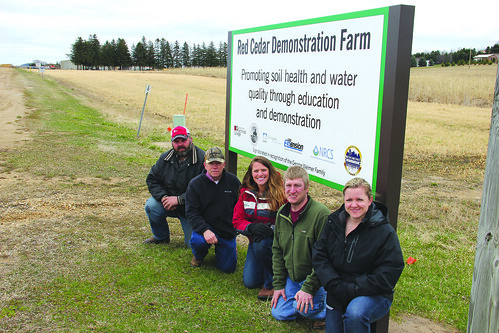
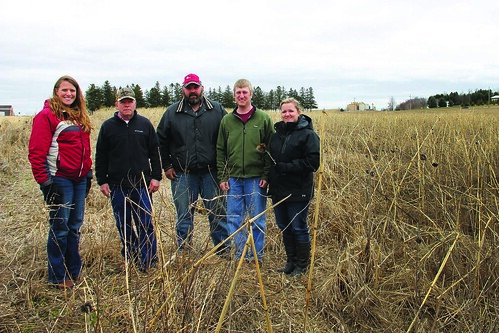
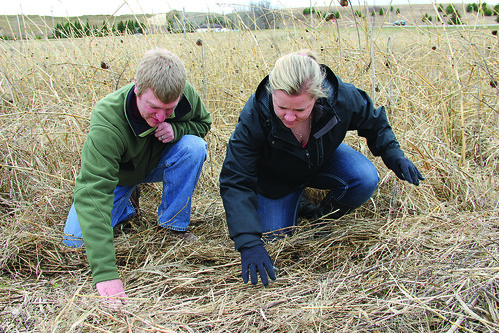
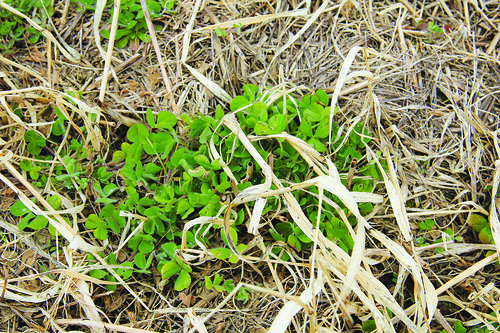
Posted by Tivoli Gough, USDA-NRCS Wisconsin Public Affairs Specialist, on August 24, 2016 at 2:00 PM

(L to R) Mark Denk, CVTC; Dan Prestebak, Dunn County Land & Water; Katie Wantoch, UW-Extension; John Sippl, USDA-NRCS; and Leah Nichol, Dunn County Land & Water proudly promote soil health and water quality through education and demonstration at the Red Cedar Demo Farm.
In Menomonie, Wisconsin, there is a 155-acre, three-parcel farm, whose purpose is to educate and demonstrate natural resources conservation. As part of their curriculum, Chippewa Valley Technical College (CVTC) Agricultural Program students perform farm work there in an outdoor classroom environment.
“The Red Cedar Demonstration Farm gives students a hands-on opportunity to plant, scout fields, monitor growth, harvest, write nutrient plans, take soil samples. Really, it’s a full farm laboratory for students,” said John Sippl, Dunn County Natural Resources Conservation Service (NRCS) District Conservationist.
The farm began through partnership. “In 2015, a partnership was formed,” Sippl says. “We started implementing soil health practices, nutrient management standards, no-till, and cover crops.”

(L to R) Katie Wantoch, UW-Extension; Dan Prestebak, Dunn County Land & Water; Mark Denk, Chippewa Valley Technical College; John Sippl, USDA Natural Resources Conservation Service; and Leah Nichol, Dunn County Land & Water tour a full season cover crop plot on the demo farm.
The partners – NRCS, Dunn County Land and Water, University of Wisconsin-Extension, and the CVTC – presented a demonstration and educational farm idea to the county board. They agreed to a five-year lease to implement conservation practices to educate students, partners, and the community on soil health and its benefits.
“They saw different agencies coming together to form a truly interactive partnership to look at conservation management,” said Dan Prestebak with Dunn County Land & Water. “This was instrumental to the committee approving our ideas for the project.”
When the partners first visited the site, they saw the effects of wind erosion, but also saw the potential for improving the health of the soil.
But what about now? Students plant corn, small grains, and soybeans. No-till is used on the majority of the land and cover crops are also being used after each crop harvest. Students learn how to use tillage equipment on a control strip, to compare to no-till areas, where conservation practices are implemented.
“We’re seeing results!” said Sippl.

Sippl and Nichol assess clover cover crop establishment.
Cover crops are also planted on the field, a multi-species mix of a winter annual, a brassica species, and clovers.
“With multi-species cover crops on the ground, we’ve seen an abundance of wildlife—more than we’ve ever seen before,” said Sippl.
The soybeans had winter rye cover crop drilled in and will be harvested for grain in the summer. Corn fields were aerial seeded with a winter cover crop when corn was still standing. Lime and urea are also being applied for nutrient management.
“By incorporating crop diversity into the system, we saw better infiltration rates in just one years’ time,” said Sippl.
“We’re demonstrating it is possible to utilize no-till and cover crops, build organic matter, change the biological diversity in the soil, infiltrate more water, decrease erosion, increase soil health and more,” said Sippl. “We have an opportunity to show how conservation efforts can make an impact long term. We’re all excited to see the difference conservation can make in educating our next generation.”
CVTC has a unique partnership with the local implement dealers to allow students to use equipment for educational purposes. “We bring students to learn; we look at agronomy, marketing, and the financial side of harvesting. We’re excited to be a hands-on member of this partnership,” said Mark Denk, CVTC Instructor.
The main goal for the demo farm is conservation education. “NRCS, Dunn County Land & Water, UW-Extension, and CVTC. We’ve always had a good relationship, but this project has really strengthened that relationship and it’s been great for the students and community also,” said Prestebak.

Cover crop seeded into corn residue.
Related Posts
Subscribe to:
Comments (Atom)
























